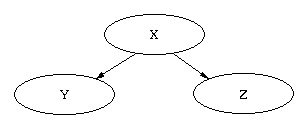
class Default {
int i;
char c;
boolean b;
Object o;
Default() {}
public static void main(String[] args) {
Default d = new Default();
String s = "The default initial value of a member variable of type ";
System.out.println(s + "int is " + d.i + ".");
System.out.println(s + "char is " + d.c + ".");
System.out.println(s + "boolean is " + d.b + ".");
System.out.println(s + "Object is " + d.o + ".");
}
}
produces the output
The default initial value of a member variable of type int is 0. The default initial value of a member variable of type char is . The default initial value of a member variable of type boolean is false. The default initial value of a member variable of type Object is null.Java does not assign any default initial value to local variables. You must initialize local variables before using them.
null is a reference to no object and null is
assignable to any object reference type.
boolean b = true; int i = b;results in the error
Conversion.java:4: Incompatible type for declaration. Can't convert boolean to int.
int i = b;
^
1 error
In many cases, the type of the left hand side of an assignment is not the
same as the type of the right hand side, but the latter can be converted,
either implicitly or explicitly, into the former. We discuss these
conversions in terms of assignments, but they also apply to expressions and
method parameters.
The first kind of implicit conversion applies to primitive types. Any value of a whole or real number type can be assigned to a variable the type of which supports a larger range of values. For example, the assignments
short s = 105; int i = s; float f = 9.1513144f; double d = f;are valid. A
char can be used wherever an int is
valid. For example,
char c = 'a'; int i = c;Java also allows implicit conversion of whole number types to real number types, but not vice versa. For example,
int i = 6; float f = i;
The second kind of implicit conversion is reference conversion. An object reference of one class can be used wherever an object reference of a superclass is required. For example, if class Y extends class X, then the assignment
X x = new Y();is valid.
double d = 72.9; int i = (int) d;the value of
i is 72. In the conversion, the fractional part is
lost. Some casts are not allowed. For example,
boolean b = true; int i = (int) b;gives rise to the error
Conversion.java:4: Invalid cast from boolean to int.
int i = (int) b;
^
1 error
Whole number types are converted by chopping off the upper bits of their
representation. For example, after the assignments
short s = -134; byte b = (byte) s;the value of
b is 122 (recall that the range of byte is
-128,...,127).
Explicit casts can also be used for reference types. Although an object of a class can be used wherever an object of a superclass is needed, the converse is generally not true. Suppose we have the following class hierarchy.

X x = (X) new Y(); // upcasting Y y = (Y) x; // downcastingIn other cases, downcasting like
X x = (X) new Z(); // upcasting Y y = (Y) z; // downcastingresults in the runtime error
java.lang.ClassCastException: Z
at Y.main(Compiled Code)
The above is based on Section 5.13 of